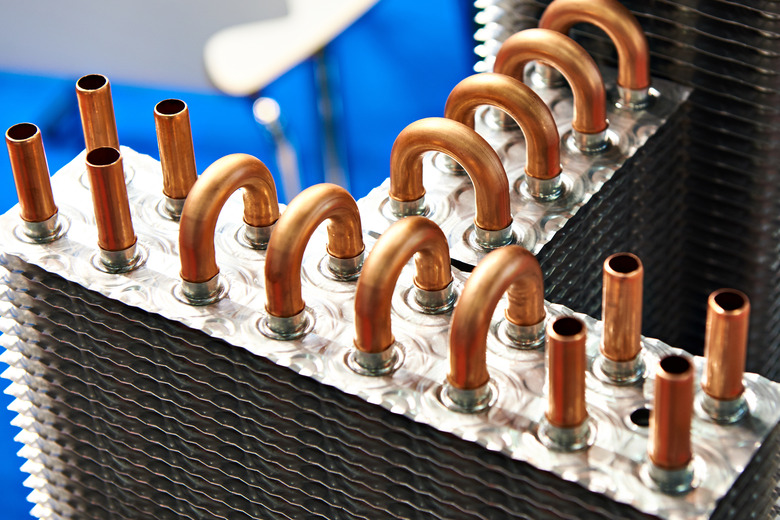How To Braze Copper To Steel With Silver Solder
Both soldering and brazing heat metals so that a filler metal (solder or brazing rod) melts, forming a bond. Unlike welding, the metals being bonded do not melt. Temperature distinguishes soldering from brazing. Generally, solder melts at less than 840 degrees F, and brazing rods melt at more than 840 degrees F. Both can contain silver. The higher the silver content, the stronger the bond but the hotter the temperature needed to melt the filler metal. Technically, you can either braze or solder, though you cannot braze with solder or solder with brazing rods. But you can attach copper to steel with silver solder using a propane torch, and call it whatever you like.
Step 1
Clean the surfaces of the metals you want to solder with solvent, emery cloth and a wire brush to remove all oil, dirt and corrosion. Try to make the metals shine. Silver solder adheres best to clean, bare metal.
Step 2
Apply a coating of flux to the steel where you are going to solder on the copper. Tin the copper by heating it and applying a thin coat of solder to the area that you want to solder to the steel.
Step 3
Hold the parts together with wire or clamps. The pieces should not move while you solder or while the joint cools. Make sure the parts fit flush. Silver solder cannot fill gaps between the metals–it will just flow through. But if needed, you can use bits of tinned copper wire as filler. Just make sure everything fits flush.
Step 4
Start heating the joint slowly with your torch, moving it closer as the flux heats up. Hold the flame directly on the joint until the flux either turns glassy or into a brown goo, depending on the flux you use. Melt the solder onto the joint. Let the metal melt the solder. Do not try to melt the solder with the torch.
Step 5
Clean the joint with the solvent and emery cloth or the brush after it cools. You can cool the joint by dousing it with water.
Things Needed
- Solvent
- Emery cloth
- Wire brush
- Flux, appropriate for the solder you choose
- Soldering torch
- Clamps
- Clean rag
TL;DR (Too Long; Didn't Read)
You can use a wide selection of solders to solder copper to steel. The easiest contains 95 percent tin and 5 percent silver, and will probably hold copper to steel for most practical uses. As the silver content goes up, so does the strength, the price and the melting point. Your melting points go from less than 450 degrees F for the tin/silver solder, up to well over 1100 degrees F for 80 percent silver brazing rods. But using a solder or brazing rod stronger than the copper itself probably wastes your time and money.
Warning
The metals will get very hot in the soldering process. Be careful of burns and scorching other materials near your work.
Cite This Article
MLA
Asmus, Richard. "How To Braze Copper To Steel With Silver Solder" sciencing.com, https://www.sciencing.com/braze-copper-steel-silver-solder-6144628/. 13 March 2018.
APA
Asmus, Richard. (2018, March 13). How To Braze Copper To Steel With Silver Solder. sciencing.com. Retrieved from https://www.sciencing.com/braze-copper-steel-silver-solder-6144628/
Chicago
Asmus, Richard. How To Braze Copper To Steel With Silver Solder last modified March 24, 2022. https://www.sciencing.com/braze-copper-steel-silver-solder-6144628/
